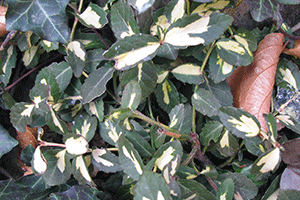At times, winter in Nebraska can be described as well…drab. The brown lawns and empty flower beds don’t do much to bring much appeal to the landscape. As such, now is a good time to take a hard look at gardens, windbreaks and borders to see what can be improved upon.
Following leaf drop, large (and even small to medium-sized) plants that usually comprise the background for foreground specimen plants, groundcovers and annuals become more visible in the winter landscape. At this point, colorful twigs, evergreen needles, retained fruits and forms with strong silhouettes become the dominant features. These landscape elements provide structure and rhythm, and though they are less perceptible in the spring and summer months, they can make a big difference between a winter presentation that is magnificent and one that is hum-drum.
Assessing Winter Views
The first step in bringing the winter landscape to life is a perception assessment. First, look at it from a comfy, prominent viewing point in the house. Keep in mind that most appreciation of the winter landscape will take place from the indoors looking outside. One approach is to look at the familiar scene to see if there is a winter focal point with eye appeal. Possibilities include a piece of sculpture, a set of bird feeders, a grouping of attractive shrubs or a singular specimen tree with special distinction such as exfoliating bark, persistent fruit, colorful stems or a sculptural habit of growth. If one is lacking, simply make a note of it and plan to incorporate one in the spring.
Adding Winter Interest
Next, consider ways to complement it with other features such as a grouping of low lying evergreens or whispering ornamental grasses that move with the wind and offer cover for songbirds. A common mistake is to smatter “winter interest plants” all around the landscape in every nook and cranny, creating a diffused and confusing effect. Identification of a focal point and a few enhancements go a long way in making sure that the view is punctuated and highlighted.
Plants that offer winter appeal in color, form or texture:
- Red Twig Dogwood – red stems
- Winterberry Holly – red berries
- Blue Meserve Holly – green leaves and red berries
- Oregon Hollygrape – green/mahogany leaves and blue berries
- Kentucky Coffeetree – stark, structural growth habit, interesting bark
- River Birch – exfoliating bark
- Concolor Fir – blue-green foliage
- White Pine – green, soft foliage
- Little Bluestem – reddish stems and seedheads
- Switch Grass – tall stems with panicled seedheads
- Whitchhazel – yellow flowers on brown stems`1234
- Crabapple – yellow or red fruit
- English Ivy – green broadleaf leaves
- Wintercreeper Euonymous – small, multi-color evergreen leaves

